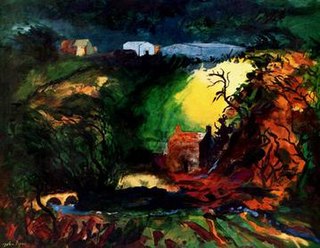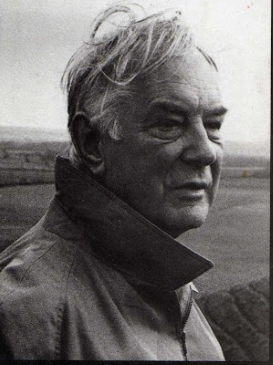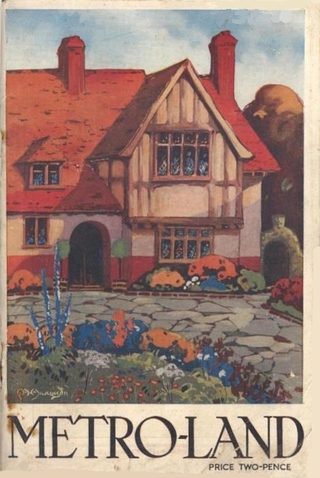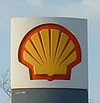
Shropshire is a ceremonial county in the West Midlands of England, on the Welsh border. It is bordered by Wrexham County Borough and Cheshire to the north, Staffordshire to the east, Worcestershire to the south-east, Herefordshire to the south and Powys to the west. The largest settlement is Telford, and Shrewsbury is the county town.

Sir John Betjeman was an English poet, writer, and broadcaster. He was Poet Laureate from 1972 until his death. He was a founding member of The Victorian Society and a passionate defender of Victorian architecture, helping to save St Pancras railway station from demolition. He began his career as a journalist and ended it as one of the most popular British Poets Laureate and a much-loved figure on British television.

Wantage is a historic market town and civil parish in Oxfordshire, England. Although within the boundaries of the historic county of Berkshire, it has been administered as part of the Vale of White Horse district of Oxfordshire since 1974. The town is on Letcombe Brook, 8 miles (13 km) south-west of Abingdon, 24 miles (39 km) north-west of Reading, 15 miles (24 km) south-west of Oxford and 14 miles (23 km) north-west of Newbury.

John Egerton Christmas Piper CH was an English painter, printmaker and designer of stained-glass windows and both opera and theatre sets. His work often focused on the British landscape, especially churches and monuments, and included tapestry designs, book jackets, screen-prints, photography, fabrics and ceramics. He was educated at Epsom College and trained at the Richmond School of Art followed by the Royal College of Art in London. He turned from abstraction early in his career, concentrating on a more naturalistic but distinctive approach, but often worked in several different styles throughout his career.

Geoffrey Edward Harvey Grigson was a British poet, writer, editor, critic, exhibition curator, anthologist and naturalist. In the 1930s he was editor of the influential magazine New Verse, and went on to produce 13 collections of his own poetry, as well as compiling numerous anthologies, among many published works on subjects including art, travel and the countryside. Grigson exhibited in the London International Surrealist Exhibition at New Burlington Galleries in 1936, and in 1946 co-founded the Institute of Contemporary Arts. Grigson's autobiography The Crest on the Silver was published in 1950. At various times he was involved in teaching, journalism and broadcasting. Fiercely combative, he made many literary enemies.

Hurst is a village in the civil parish of St Nicholas Hurst in the English county of Berkshire.

Metro-land is a name given to the suburban areas that were built to the north-west of London in the counties of Buckinghamshire, Hertfordshire and Middlesex in the early part of the 20th century that were served by the Metropolitan Railway. The railway company was in the privileged position of being allowed to retain surplus land; from 1919 this was developed for housing by the nominally independent Metropolitan Railway Country Estates Limited (MRCE). The term "Metro-land" was coined by the Met's marketing department in 1915 when the Guide to the Extension Line became the Metro-land guide. It promoted a dream of a modern home in beautiful countryside with a fast railway service to central London until the Met was absorbed into the London Passenger Transport Board in 1933.

Paul Nash was a British surrealist painter and war artist, as well as a photographer, writer and designer of applied art. Nash was among the most important landscape artists of the first half of the twentieth century. He played a key role in the development of Modernism in English art.
John Louis Beddington (1893–1959) was a United Kingdom advertising executive, best known for his work as publicity director for Shell in the 1930s and as head of the Ministry of Information Films Division during World War II.

David William Gentleman is an English artist. He studied art and painting at the Royal College of Art under Edward Bawden and John Nash. He has worked in watercolour, lithography and wood engraving, at scales ranging from platform-length murals for Charing Cross Underground Station in London to postage stamps and logos.

Farnborough is a village and civil parish in West Berkshire, about 4 miles (6.4 km) south of Wantage. The village is 720 feet (220 m) above sea level on a ridge aligned east – west in the Berkshire Downs. It is the highest village in Berkshire.
"Slough" is a ten-stanza poem by Sir John Betjeman, first published in his 1937 collection Continual Dew.
A & C Black is a British book publishing company, owned since 2002 by Bloomsbury Publishing. The company is noted for publishing Who's Who since 1849 and the Encyclopædia Britannica between 1827 and 1903. It offers a wide variety of books in fiction and nonfiction, and has published popular travel guides, novels, and science books.
The Australian Antarctic Territory, claimed by Australia on 1 December 1959, has used a postal system as its main point of contact since its establishment, due to its isolation. The territory covers over 5.8 million kilometres squared and currently has 5 stations, after Wilkes Station closed down in 1969. Each of the bases has their own post office that are run by Australia Post, who also controls stamp issues according to recent or important events within the territory. The history of the postage system dates back to the original post office within the territory, which first opened in 1955, which was in conjunction with a stamp release. The current system now combines new technologies with aged systems to create more efficiency, with recent stamp releases commending the history of the Australian Antarctic Territory and the Arts.
The Ariel Poems were two series of pamphlets that contained illustrated poems published by Faber and Gwyer and later by Faber and Faber. The first series had 38 titles published between 1927 and 1931. The second series, published in 1954, had 8 titles.

Teach Yourself is currently an imprint of Hodder Education and formerly a series published by the English Universities Press that specializes in self-instruction books. The series, which began in 1938, is most famous for its language education books, but its titles in mathematics are also best sellers, and over its long history the series has covered a great many other subjects as well. "A Concise Guide to Teach Yourself", compiled by A R Taylor, was published in 1958 and listed all the titles up until then.
The Pevsner Architectural Guides are four series of guide books to the architecture of the British Isles. The Buildings of England series was begun in the 1940s by the art historian Sir Nikolaus Pevsner, with its 46 original volumes published between 1951 and 1974. The fifteen volumes in the Buildings of Scotland series were completed between 1978 and 2016, and the ten in the Buildings of Wales series between 1979 and 2009. The volumes in all three series have been periodically revised by various authors. The Buildings of Ireland series was begun in 1979 and remains incomplete, with six volumes published. A standalone volume covering the Isle of Man was published in 2023.
William Collins, Sons & Co., often referred to as Collins, was a Scottish printing and publishing company founded by a Presbyterian schoolmaster, William Collins, in Glasgow in 1819, in partnership with Charles Chalmers, the younger brother of Thomas Chalmers, the minister of Tron Church in Glasgow.

Llandissilio is a village and parish in the community of Llandissilio West in east Pembrokeshire, Wales on the A478 road between Efailwen to the north and Clunderwen to the south. A largely ribbon development along the main road, the village is surrounded by farmland.
Signature: A Quadrimestrial of Typography and the Graphic Arts was a British magazine of typography and the graphic arts. Published and edited by Oliver Simon, it was subsidised and printed by the Curwen Press, of which Simon was a director. It appeared in fifteen volumes from 1935 to 1940, and eighteen volumes from 1946 to 1954 as a new series.














